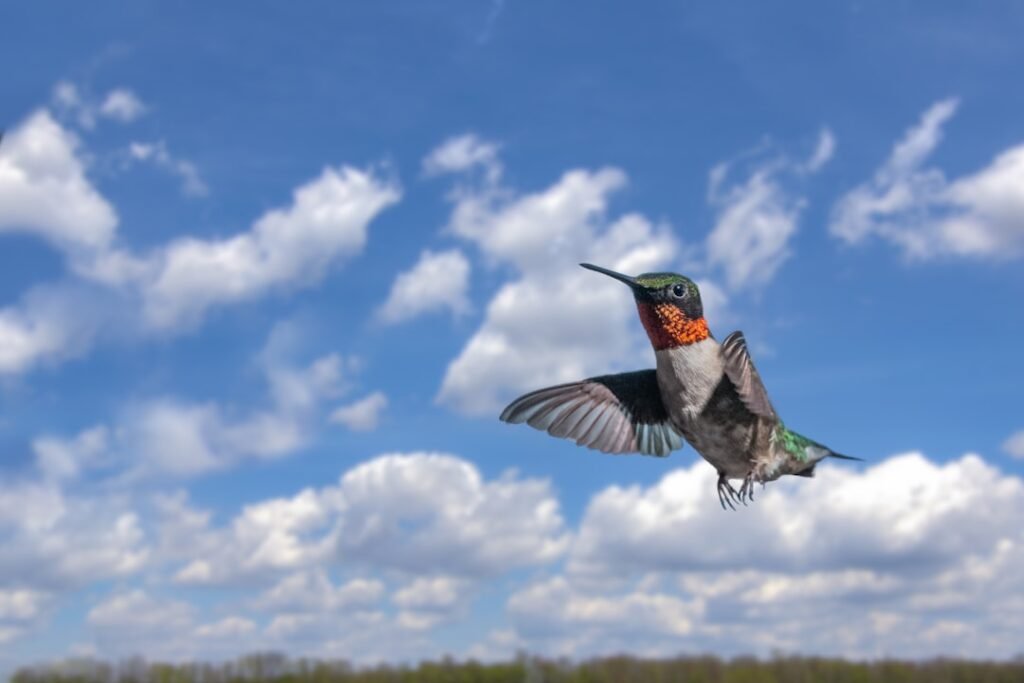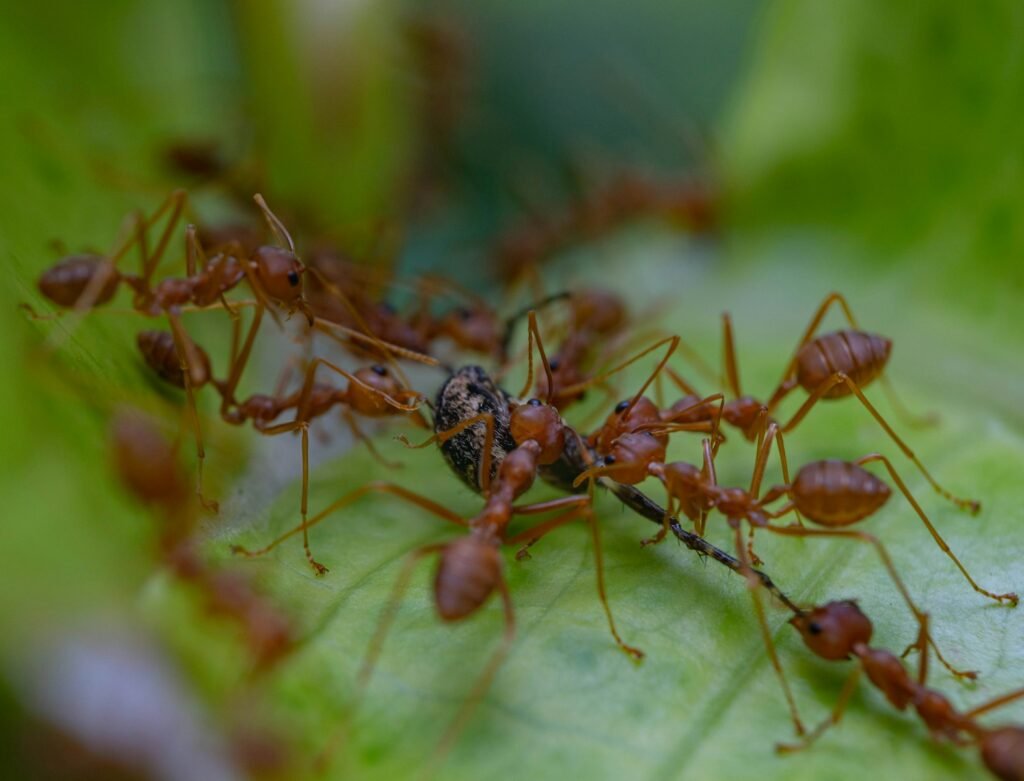They seem to hang on invisible threads, their bodies motionless while their wings blur into a silver halo. For more than a century, that illusion has teased scientists and backyard watchers alike: how does a bird the size of a thumb beat physics at its own game? The mystery deepened as cameras sped up and measurements sharpened, revealing that the trick isn’t magic – it’s precision aerodynamics pushed to outrageous extremes. Today, a new wave of experiments and models shows how hummingbirds turn unsteady air into steady lift, why hovering drains so much energy, and how these birds still make it look effortless. The result is a story where biology and engineering meet in midair, with lessons for tiny flying robots and for the flowers that depend on these aerial athletes.
The Hidden Clues

Watch a hummingbird hold position in a gust and you’ll see it: the head barely moves while the body subtly tilts and the tail flicks like a rudder. That stillness is a clue that the wings – not the body – do almost all the work of control, twisting and sweeping in a tight figure-eight to sculpt the air. Instead of flapping like a small hawk or sparrow, hummingbirds reverse the angle of their wings mid-stroke, so they can pull lift from both the downstroke and the upstroke. The choreography is unbelievably fast – often around fifty to eighty beats each second in a steady hover – and it keeps the bird anchored at a flower bobbing in the wind. I once tried to film one with my phone and learned a humbling truth: the bird was faster than my camera and more disciplined than my hands.
Hidden in that blur are repeatable patterns that aerodynamics can measure and predict. As the wing sweeps forward, a compact whirl – called a leading-edge vortex – sticks to the wing and supercharges lift. Just before the wing reverses, the bird rapidly pitches its hand-like tip to flip the airflow and reset the system for the next half-stroke. The head’s rock-steady pose signals a high-performance stabilization loop that fuses rapid vision, inner-ear balance, and wing muscle feedback. It’s not a violation of physics; it’s physics – used spectacularly well.
The Physics of a Hover

Hovering is the hardest thing a bird can do because the wings must continuously create lift equal to body weight without the helpful push of forward motion. Hummingbirds solve this by operating in an unsteady regime where vortices are assets, not obstacles. The leading-edge vortex forms and remains attached over much of the stroke, boosting lift beyond what a smooth, steady flow would allow. Most lift typically arrives on the downstroke, while the upstroke still contributes a substantial share thanks to the wing’s rapid rotation and camber reversal. Think of it like treading water in a choppy sea – except the swimmer is making the waves work for them.
Key data points that anchor this picture include:
- Wingbeat frequency often around fifty to eighty beats per second during hover.
- Lift comes from both halves of the stroke, with the downstroke usually providing the larger portion.
- Wings trace a tight figure-eight and rotate quickly at stroke reversals to maintain attached vortices.
- Tail feathers act as a trim tab, adding stability and fine control in gusts.
These aren’t parlor tricks; they’re the fingerprints of unsteady aerodynamics tuned by evolution.
Anatomy Built for Air

The body is a hovercraft’s fuselage and the wings are its propellers, and hummingbirds have upgraded both. A ball-and-socket shoulder joint lets the wing sweep and rotate through a large arc, giving the bird the freedom to flip aerodynamic surfaces on the fly. The primary flight feathers are stiff yet slender, resisting flutter while shedding and shaping tiny vortices. Inside, two massive flight muscles – the pectoralis and supracoracoideus – power downstroke and upstroke with unusual symmetry for a bird. Together, those muscles make up roughly about one third of a hummingbird’s body mass, a statistic that reads like a blueprint for lift-on-demand.
Control surfaces sit everywhere once you know where to look. The wrist and hand segments twist the wing along its span, adjusting angle and camber from shoulder to tip. The tail splays or closes to act like a helicopter’s anti-torque tail, helping yaw and pitch corrections without wasting wing power. Even the tongue’s rapid in-and-out motion coordinates with hover posture at a flower, because feeding is flight with a straw. The entire animal is a feedback machine that turns sugar into precise force.
Metabolism at Full Throttle

Precision costs energy, and hummingbirds pay at a rate that would terrify a marathoner. In hover, their oxygen consumption per gram ranks among the highest measured for any vertebrate. Heart rates can sprint past a thousand beats per minute, and the birds burn both glucose and fructose directly from nectar with remarkable efficiency. During cool nights or lean hours, many species drop into torpor, dialing metabolism way down to survive until sunrise. At high elevations, where air is thin, some species also show hemoglobin and muscle adaptations that keep oxygen flowing to those oversized engines.
The daily math would crush a larger animal. A hummingbird may drink nectar roughly equal to its body mass in a day, topping off with insects for proteins and micronutrients. That constant fueling allows the animal to treat hovering like a daily commute, not a stunt. It also explains why feeders need maintenance and why a single missing patch of flowers can ripple through a neighborhood’s birds. Energy, not bravado, sets the limits of their flight show.
From Ancient Tools to Modern Science

Our understanding of hummingbirds moved from marvel to measurement thanks to technology. Early naturalists leaned on stop-motion photography to freeze the blur, but the real breakthroughs came with high-speed video and particle image velocimetry, which let researchers visualize the vortices themselves. Wind tunnels and carefully instrumented perches now pair with 3D motion capture to track every twist and turn of a hovering wing. Computational fluid dynamics simulates the unsteady flows frame by frame, testing how tiny changes in wing angle or timing alter lift. Together, these tools build a converging picture that connects muscle activation, wing mechanics, and airflow.
That research is inherently comparative. Scientists test different species, from tiny bee hummingbirds to larger mountain specialists, to see how size and environment tune the same basic template. Some experiments push birds to hover in thinner air, or to track moving flowers, to reveal hidden control strategies. Others measure recovery from raindrop impacts or gusts, probing resilience in real-world conditions. Each study refines the blueprint for hover, and exposes trade-offs that engineers can try to copy – or avoid.
Why It Matters

Unsteady aerodynamics at hummingbird scale is a laboratory for the future . Helicopters achieve hover with rigid rotors and brute-force torque, while quadcopters rely on fast-spinning props and real-time computing. Hummingbirds point to a third path: soft, shape-changing wings that pull extra lift from vortices rather than fighting them. That approach could make micro air vehicles quieter, more agile in cluttered spaces, and more resilient to gusts. It also redefines efficiency, since extracting useful force from unsteady flows may reduce power spikes during hover and maneuvering.
The stakes are ecological, not just technological. Hummingbirds pollinate countless plants across the Americas, and their flight allows them to visit flowers that other birds and insects can’t easily reach. If climate shifts disrupt bloom timing or fragment habitat, the birds’ high energy budgets leave little margin for error. Understanding how they fly – and what they need to keep flying – connects physics to gardens, farms, and montane forests. That link makes hover not just a curiosity but a conservation priority.
The Future Landscape

Engineers are now building flapping-wing robots inspired by hummingbird control strategies, pairing lightweight materials with rapid actuators and on-board AI. The toughest challenges are power and endurance: batteries still lag far behind nectar as a compact energy source, and energy recovery in flapping systems is in its infancy. New materials that store and release elastic energy could give small drones the spring-like advantages that real wings exploit at stroke reversal. Smarter control loops, trained on high-speed flight data, may let robots ride their own vortices the way a hummingbird does. The payoff would be tiny vehicles that inspect infrastructure indoors, monitor crops gently, or survey disaster zones without the noise of rotors.
Biology will keep setting benchmarks. Researchers are mapping neural circuits for gaze stabilization, testing how visual patterns help birds lock position, and refining models that predict vortex behavior over entire wingbeats. Expect wind-tunnel studies at simulated altitudes, plus field tests that track hover performance in real weather. Policy and ethics matter too: deploying bioinspired drones near wildlife or in cities demands careful guidelines. The frontier is not just how to hover, but how to do it responsibly.
Conclusion

Bring the science home by making your patch of air easier for hummingbirds to master. Plant native, nectar-rich flowers that bloom in sequence across the warm months, and avoid pesticides that can poison birds or their insect prey. If you put out a feeder, use plain sugar water at roughly one part sugar to four parts water, skip dyes, and clean thoroughly every couple of days in hot weather to prevent harmful growths. Make windows safer with visible patterns, keep cats indoors, and leave small perches where birds can rest between foraging bouts. Finally, support local habitat projects and community science counts; the more data we collect, the better we can protect these specialists of the hover.

Suhail Ahmed is a passionate digital professional and nature enthusiast with over 8 years of experience in content strategy, SEO, web development, and digital operations. Alongside his freelance journey, Suhail actively contributes to nature and wildlife platforms like Discover Wildlife, where he channels his curiosity for the planet into engaging, educational storytelling.
With a strong background in managing digital ecosystems — from ecommerce stores and WordPress websites to social media and automation — Suhail merges technical precision with creative insight. His content reflects a rare balance: SEO-friendly yet deeply human, data-informed yet emotionally resonant.
Driven by a love for discovery and storytelling, Suhail believes in using digital platforms to amplify causes that matter — especially those protecting Earth’s biodiversity and inspiring sustainable living. Whether he’s managing online projects or crafting wildlife content, his goal remains the same: to inform, inspire, and leave a positive digital footprint.




